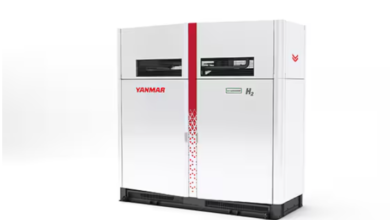Kawasaki working on hydrogen storage infrastructure

Kawasaki Heavy Industries said that it had prepared the basic designed of the world largest spherical liquefied hydrogen storage tank. The tank’s storage capacity is 10,000 m3 (approximately 710 tonnes) and is ideal for cryogenic hydrogen. The storage will be enough for 10,000 fuel cell cars, equivalent to 10,000 km mileage.
Kawasaki plans to present the mega tank to energy and industrial gas companies, as demand for hydrogen is rising.

The 30-meter diameter tank will use self-pressure discharge method, and would not need a liquid water pump. It will use “vacuum double-shell heat insulation structure” to block heat from outside. Liquefied hydrogen is ten times more susceptible to heat compared to LNG. Therefore, hydrogen storage tanks are designed with high precision to achieve better insulation performance.
The company has been producing tanks for liquefied hydrogen storage since 1980 when it made the first tank with a capacity of 540 m3. In December 2020, Kawasaki also claimed to have delivered the world’s first liquefied hydrogen cargo handling terminal to CO2-free Hydrogen Energy Supply-chain Technology Research Association (HySTRA) for demonstration.
In December 2020, Kawasaki also signed an MoU with Fortescue Metals Group and Iwatani Corp to study the commercialisation of hydrogen supply chain. The plan is to produce hydrogen by using renewable energy (wind and solar) in Australia and elsewhere and then ship it to Japan in a liquefied hydrogen carrier.
